Research Projects
Decisive factors in the success of the creation of CIAUD-UPT were the research activity previously developed in the scope of CI-ESG and now at CIAUD-UPT, which regularly wins competitive funding from National and European research programmes, such as FCT, Culture 2000, Creative Europe, InterReg, POCTEP, etc. The high variety of projects was possible due to the high number of submitted annual bids, responding to the growing competitiveness of the group.
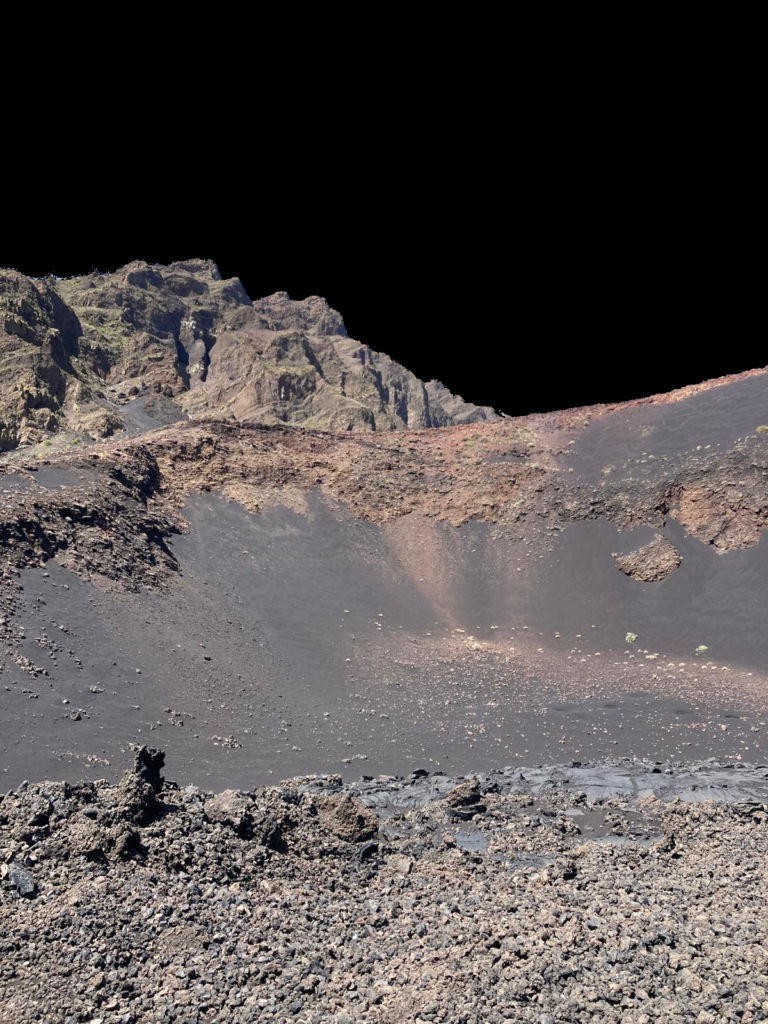
ArchiSpace
Acronym: ArchiSpace
Project Title:ArchiSpace: ArchiSpace: Space Architecture design and prototyping in planetary analogue environments
Funding Program: HORIZON Europe | Marie Skłodowska-Curie Actions (MSCA)
Project Reference: Grant agreement ID: 101183089 – DOI: 10.3030/101183089
Entities:
- IRSPS SRL – International Research School of Planetary Sciences (Italy) (Project Leader)
- T.U. DELFT (The Netherlands)
- UPT – Portucalense University, CIAUD-UPT (Portugal)
- UL – Université de Lyon 1 Claude Bernard (France)
- Vertico BV (The Netherlands)
- HUN-REN – Research Centre for Astronomy and Earth Sciences (Hungary)
- UPescara – Università degli Studi G. d’Annunzio Chieti – Pescara (Italy)
- UCA – Université de Cadi Ayyad (Morocco)
- UPC- Universitat Politècnica de Catalunya (Spain)
Coordination:
- Gian Gabriel Ori, IRSPS SRL (Project Leader & IRSPS SRL Coord.)
- Mariana Correia, CIAUD-UPT (UPT coord.)
UPT Research Team:
- Telma Ribeiro, CIAUD-UPT (WP4.3-Coord.)
Susana Milão, CIAUD-UPT (WP4.1-Coord.)
Rui Florentino, CIAUD-UPT (WP4.1-Coord.)
Alexandra Araújo, CINTESIS.UPT (WP4.1-Coord.)
Sandra Fernandes, CINTESIS.UPT (WP4.1-Coord.)
Isabel Clara Neves, CIAUD-UPT (WP4.2-Coord.)
Ana Lima, CIAUD-UPT (WP4.2-Coord.)
Mónica Alcindor, CIAUD-UPT
Joaquim Flores, CIAUD-UPT
Emilia Simão, CIAUD-UPT
Bernardo Amaral, DAMG
Ivo Teixeira, DAMG
Alexandre Clément, DAMG
Pedro Rodrigues, CINTESIS.UPT
- Elsa Teixeira, CINTESIS.UPT
- Ana Bartolo, CINTESIS.UPT
Expected Outputs:
32 Secondments; 4 Reports; Several publications.
Keywords:Space Architecture, climate change, resilient habitats, earthen architecture, 3D printing.
Abstract:
In this decade, we aim to come back to the Moon to stay. It is therefore crucial to develop reliable and safe settlements that adequately protect human well-being from possible threats that the hostile environment presents. ArchiSpace aims to design and build sub-systems prototypes (such as living spaces) of human infrastructures to be built on planetary surfaces, which will be tested in planetary analogue environments. ArchiSpace is pioneering a new field of interdisciplinary and intersectoral research in Europe by bridging geology/space sciences and architecture/space architecture. In particular ‘humanfocused’ habitats have a key-role in designing comfortable, safe and functional living habitats. This will be possible by studying adaptive and resilient architecture facing climate change, but also the quality of spaces in living heritage as vernacular architecture, adapted to extreme environments.
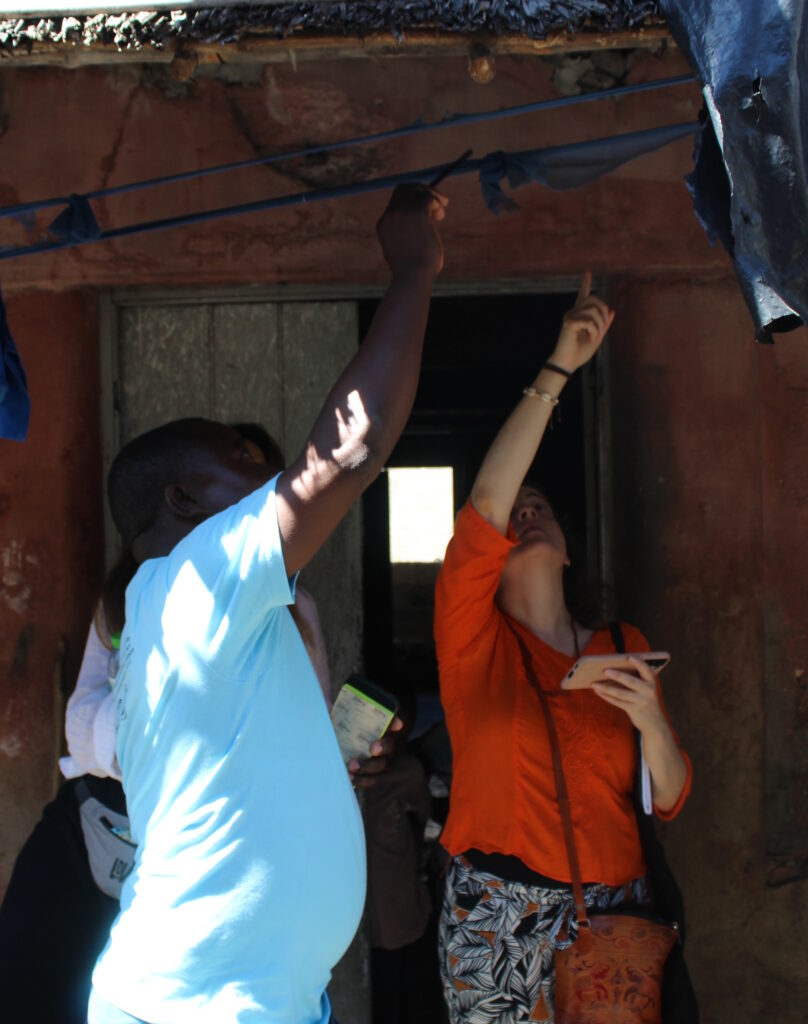
Resilient Mozambique
Project Title:Community participation in assessing the state of conservation of heritage and resilience mechanisms in response to the risks and disasters caused by Cyclone Gombe.
Project Reference: Contract No. 4500517809 / International Assistance to World Heritage – response No. 3428.
Entities: CIAUD-UPT & GACIM
CIAUD-UPT Research Team:
- Telma Ribeiro, CIAUD-UPT (WP4.2-Coord.)
- Joaquim Flores, CIAUD-UPT (WP4.3-Coord.)
- Susana Milão, CIAUD-UPT (WP4.4-Coord.)
- Isabel Clara Neves, CIAUD-UPT.
- David Viana, CIAUD-UPT.
CIAUD Research PhD Student: Olga Alvarez, CIAUD.
UPT Research Master Student: Cristina Azevedo, DAMG
Outputs: Four outputs were delivered: 1) Capacity-building courses in: World Heritage, Diagnosis and Conservation, Management Tools, and Resilient Habitat; 2) Island Post-cyclone state of conservation status through conservation survey of 100 buildings; 3) Development of a multi-sectoral management tool to respond to disasters through a mapping of the island using GIS-Geographic Information Systems and collaborative mapping of risk factors associated with climate phenomena; 4) Booklet with recommendations for a more resilient habitat when facing cyclones. This integrated approach allowed to have an update of the current state of heritage, a map of the most vulnerable areas, a comprehensive management tool, and proposed technical strategies for habitat enhancement.
Keywords: Climate Change, Cyclones, World Heritage, GIS, Conservation, Resilient Habitat, Mozambique.
According to the 2021 Global Climate Risk Index, Mozambique was the country most affected by climate change, in Africa. The impact of climate change is expected to increase over the next decades. The Island of Mozambique, listed as a World Heritage property by UNESCO since 1991, faces a series of challenges related to its preservation and vulnerability to extreme weather events, especially cyclones. The passage of Cyclone Gombe, in March 2022, highlighted the urgent need to develop resilience strategies to protect local communities and architectural heritage from the impacts of these natural disasters. The Island, with its history and culture, has a material and immaterial legacy that needs to be protected and managed in a sustainable way, in the face of growing climate threats. This project was key to ensure that the Island of Mozambique could become an example of good practices in conservation and prevention, when facing the challenges brought by climate change. Through the creation of resilient management instruments and the strength of local capacities, the project contributed to reinforce the protection of the Island of Mozambique and its people, in the face of natural disasters.

MetroPoLis
Acronym: MetroPolis
Project Title: MetroPoLis. Lisbon and Porto shared metropolis. Sustainable tourism beyond city centre
Program: CIAUD embryonic projet. Funded by FCT – Fundação para a Ciência e a Tecnologia, I.P., under the Strategic Project with the references UIDB/04008/2020 and UIDP/04008/2020.
Period: 2024-25
Entities:
- Lisbon Metropolitan Area (AML)
- Porto City Council (CMP)
Coordination CIAUD-UPT: Rui Florentino CIAUD-UPT
CIAUD-UPT Research Team:
- Telma Ribeiro, CIAUD-UPT
- Mónica Alcindor, CIAUD-UPT
CIAUD-UPT Collaborators:
- David Viana, CIAUD-UPT
- Isabel Vaz Freitas, CIAUD-UPT
- Goreti Sousa, CIAUD-UPT
External Collaborators:
- Patricia Canelas, Oxford University
- Jorge Ricardo Pinto, ISCET, Porto
- José Pedro Tenreiro
Outputs: Seminars, Conference Proceedings, Papers
Website: https://metropolisplatform.com/
Keywords: Lisbon, Porto Metropolitan area, Sustainable Tourism
Abstract:
The metropolitan areas can be presently the most relevant actors for leadership and competitiveness. They shape our present “way of life” and require a higher level of coordination for regional planning and institutional governance. The international tourism came as an economic key element for metropolitan governance and, possibly, it will be even more relevant in the coming years. To improve it, previous research has shown that changes in the institutional marks need to be balanced with good results from the technical issues of planning practices. In the context of the sustainable development goal for cities and communities (SDG number 11), if there is an opportunity to growth, maybe we should spread it into their metropolitan areas, beyond the city centres. The analysis will address this main question: how should we balance the tourism activities with the urban cohesion of Porto and Lisbon?
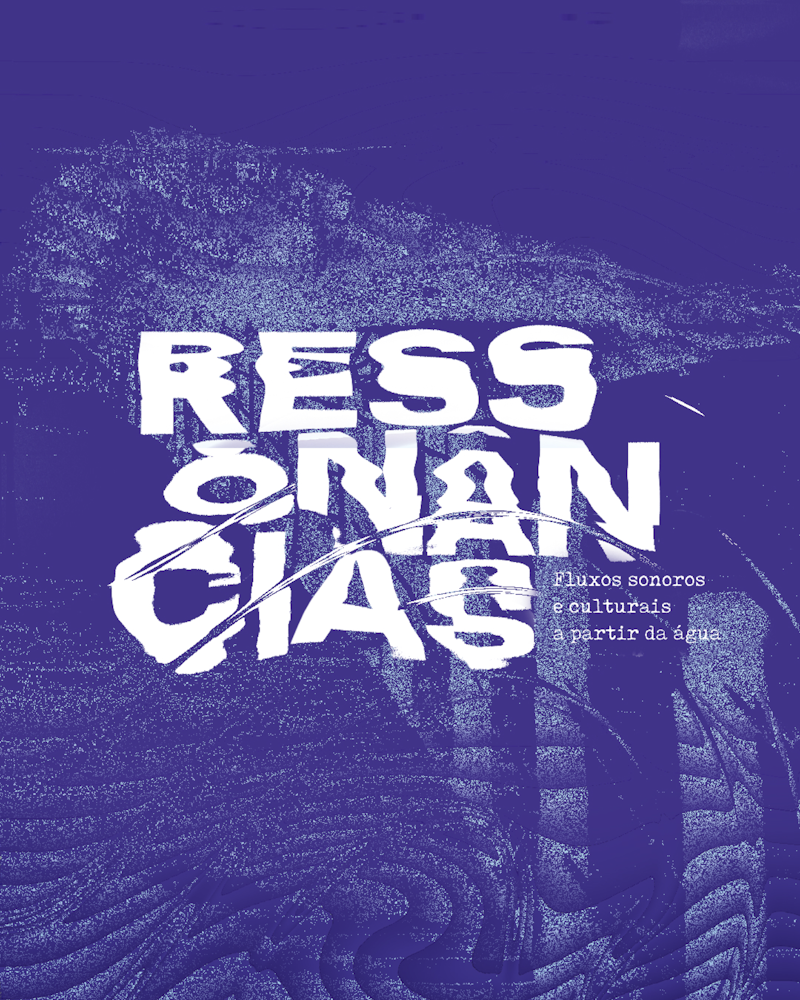
Ressonâncias
Acronym: Ressonâncias
Program: Gulbenkian — Programa PARTIS & Art for Change
Organizer: Rio Neiva – Environmental NGO (Coord.)
Period: 2027
Entities:
- NICE – Núcleo de Intervenção Cultural de Esposende (Partner)
- Escola Henrique Medina (Partner)
- Câmara Municipal de Esposende (Partner)
- Portucalense University, CIAUD-UPT (Partner)
Coordination: Clara Roberti, CIAUD-UPT, Coordinator
CIAUD-UPT Research Team: Ana Clara Roberti, CIAUD-UPT, Emilia Simão, CIAUD-UPT, Damião Matos, CIAUD-UPT
Expected Outputs: Project Video Teaser, Performance-Installation, Photography exhibition, Reflection and avaluation manual, Ethnography Documentary (Ongoing)
Abstract:
Based on the Social Diagnosis of Esposende (2023) and the specific social and educational needs identified, the ‘Resonances’ project aims to structure and enhance the process of welcoming and socially integrating young migrants from Esposende in a school context through artistic sound practices, with water as the framework and guiding element, promoting intercultural affections, the sharing of experiences, and broad participation in the community.

SizaATLAS
Acronym: SizaAtlas
Project Title: SIZATLAS: Filling the gaps for World heritage
Funding Program: FCT – Foundation for Science and Technology | Siza Program
Project Reference: SIZA/ETM/0023/2019
Period: 2021-2024
Entities:
- ISCTE/ISTAR-IUL – University Institute of Lisbon/ Research Center for Information Sciences, Technologies and Architecture (Project Leader).
- FAUP/CEAU – Faculty of Architecture of the University of Porto/ Center for Architecture and Urbanism Studies.
- UPT/CIAUD-UPT – Portucalense University/ Research Centre for Architecture, Urbanism and Design – Portucalense University’s hub.
Coordination:
- Soraya Genin IRSPS SRL (Project Leader & ISCTE Coord.)
- Teresa Ferreira (FAUP coord.)
- Mariana Correia, CIAUD-UPT (UPT coord.)
CIAUD-UPT Research Team:
- Mariana Correia (coord.), CIAUD-UPT
- Telma Ribeiro, CIAUD-UPT
- Gilberto Carlos, CIAUD-UPT
- Ana Lima, CIAUD-UPT
- Goreti Sousa, CIAUD-UPT
- Rui Florentino, CIAUD-UPT
CIAUD-UPT Collaborators:
- Susana Milão, CIAUD-UPT
- Joaquim Flores, CIAUD-UPT
- Isabel Clara Neves, CIAUD-UPT
- Joana Vieira da Silva, DAMG
- Paulo Guerreiro, DAMG
- Bruno de Andrade, DAMG
FCT UPT Researcher: Uriel Perles
Outputs: Platform with the inventory of all Siza works; map with all Siza works location; Publications (a general book, and 18 booklets).
Website: https://sizaatlas.iscte-iul.pt/
Keywords: SizaAtlas, World Heritage, Atlas, Climate Change (facing water)
Abstract:
The scope of SizaATLAS project is to address a comprehensive inventory of all of Siza’s built works, and to develop a detailed documentation and analysis of the 18 buildings selected for the World Heritage List. This research and the comparison with other contemporary architecture will result in a better understanding of the unique value of Siza’s architecture, in a national and international context. This will be key to establish the justification of the Oustanding Universal Value (OUV) of his work, its national protection and an effective management system to support the instruction of Siza’s works nomination for the World Heritage List.
The research team has multidisciplinary competences in the areas of Architecture, History, World Heritage, Technology, Engineering and IT, and brings together the necessary skills to elaborate the various foreseen tasks. It also includes national and international experts with a high-profile curriculum, knowledge of Siza’s work, and experience in World Heritage. In a participatory based strategy, the inventory will have the collaboration of national and international organizations.

VERSUS+
Acronym: VERSUS+
Project Title: VerSus+: Heritage for people.
Funding Program: Creative Europe, European Commission
Project Reference: 607593-CREA-1-2019-1-ES-CULT-COOP1
Period: 2019-2023
Entities:
- UPV – Polytechnic University of Valencia (Spain) (Project Leader)
- CIAUD-UPT – Portucalense University’s pole of the Research Centre for Architecture, Urbanism and Design (Portugal)
- UNIFI – University of Florence (Italy)
- UNICA – University of Cagliari (Italy)
- CRATerre – Grenoble School of Architecture (France).
Coordination:
- Camilla Mileto & Fernando Vegas UPV (Project Leader & UPV Coord.)
- Mariana Correia, CIAUD-UPT (UPT coord.)
CIAUD-UPT Researchers:
- Gilberto Carlos, CIAUD-UPT
Ana Lima, CIAUD-UPT
Monica Alcindor, CIAUD-UPT
Emilia Simão, CIAUD-UPT
Goreti Sousa, CIAUD-UPT
Rui Florentino, CIAUD-UPT
Telma Ribeiro, CIAUD-UPT
Isabel Freitas, REMIT
Teresa Correia, UPT
Outputs: Book, Conference Proceedings, booklet, App, Games, Festivals, Exhibitions, Activities.
Website: https://versus-people.webs.upv.es/
Keywords: Vernacular heritage, craftspeople, sustainable architecture
Abstract:
A continuation of VerSus project, VERSUS+ project focuses on the transmission of knowledge of vernacular heritage to different branches of society and the general public. It pays special attention to the society of the future (children and young people) as well as local, regional and national authorities in charge of heritage management including specialists in the field of architecture together with craftsmen and companies in the construction and tourism sectors, cultural and social associations and educational institutions. Above all it plays an essential role in contemporary society as it is able to highligth important principles and lessons for a respectful sustainable architecture.
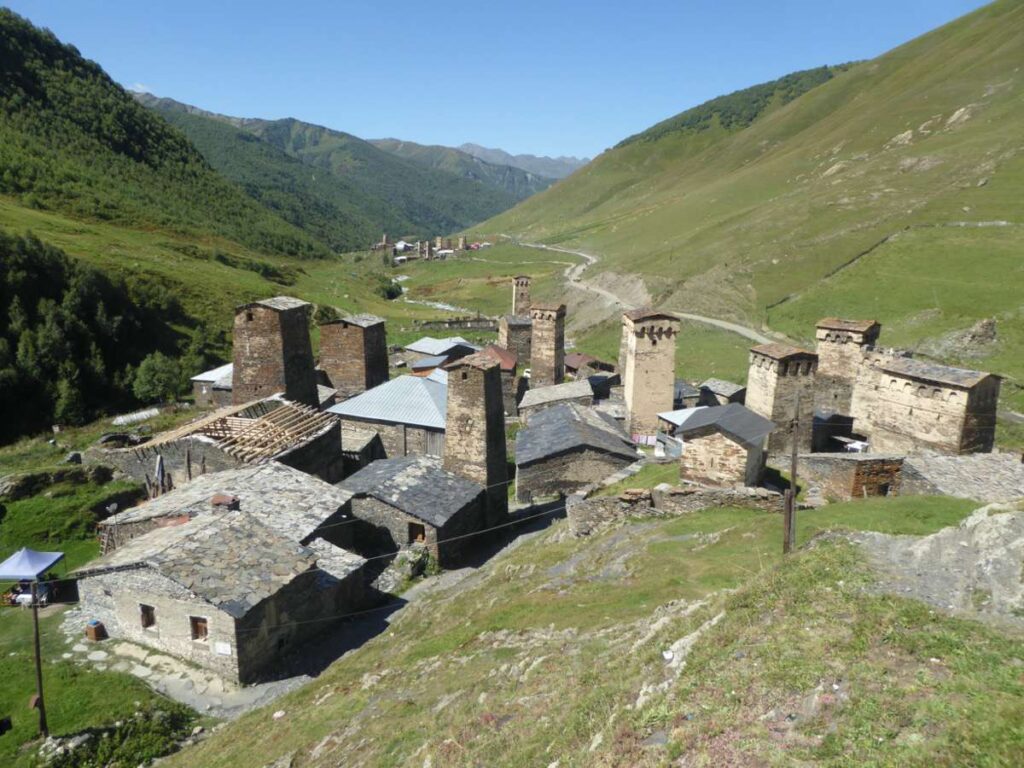
3DPAST
Acronym: 3DPAST
Project Title: 3DPAST: Living & virtual visiting European World Heritage.
Funding Program: Creative Europe, European Commission
Project Reference: 607593-CREA-1-2019-1-ES-CULT-COOP1
Period: 2016-2020
Entities:
- ESG – Escola Superior Gallaecia / now integrated at UPT and CIAUD-UPT – Portucalense University’s hub of the Research Centre for Architecture, Urbanism and Design (Portugal) (Project Leader)
- UPV – Polytechnic University of Valencia (Spain)
- UNIFI – University of Florence (Italy)
Coordination: Mariana Correia, CIAUD-UPT (Project Leader & UPT Coord.)
CIAUD-UPT Researchers:
- Gilberto Duarte Carlos, CIAUD-UPT
- Ana Lima, CIAUD-UPT
- Mónica Alcindor, CIAUD-UPT
- Emilia Simão, CIAUD-UPT
- Goreti Sousa, CIAUD-UPT
- Rui Florentino, CIAUD-UPT
- Damião Matos, DAMG
- Luis Paulo Pacheco, DAMG
- Teresa Correia, UPT
Outputs: 8 Missions to European World Heritage sites in Albania, Georgia, Finland, Romania, Greece, Italy, Spain and Portugal (Azores); 3DPAST platform; 3DPAST Book: ‘From Vernacular to World heritage’ (2020); 3DPAST App; 3DPAST booklet; Heritage 2020 International Conference; Heritage 2020 Proceedings; Serious Games; Exhibitions; Videos, 8 scientific workshops in European universities.
Website:https://esg.pt/3dpast/
https://esg.pt/3dpast/platform/
Keywords: World Heritage, Vernacular architecture, living heritage, 3D, VR, AR, Art in architecture.
Abstract:
3DPAST focused on the vernacular dwellings located in different sites, across Europe. It explored the Architectural Dimension (D1) regarding the buildings maintenance, in order to contribute to the awareness and the preservation of the authenticity and integrity of those WH sites. The project contributed to the interpretation of the Local Building Culture Historical Evolution (D2) of the dwellings’ sites, which were recreated through 3D visualization and augmented reality. This became a powerful didactic tool not only to learn and value the relevance of the vernacular buildings, but also to enhance the Intangible Cultural Heritage (D3) still in-use nowadays, regarding the buildings’ architectural techniques, materials and building systems’ maintenance.
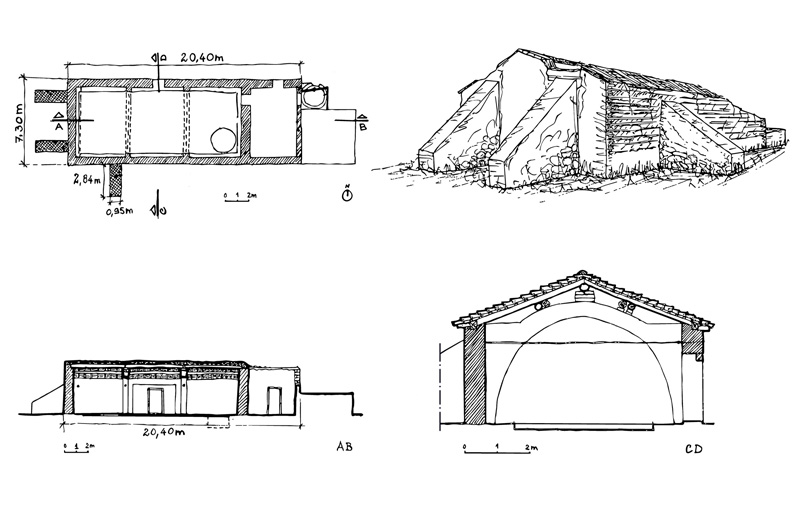
Seismic-V
Acronym: SEISMIC-V
Project Title: SEISMIC-V: Local Seismic Culture in Portugal
Funding Program: FCT – Foundation for Science and Technology
Project Reference: PTDC / ATP-AQI / 3934/2012
Period: 2013-2015
Entities:
- ESG – Escola Superior Gallaecia / now integrated at UPT and CIAUD-UPT – Portucalense University’s hub of the Research Centre for Architecture, Urbanism and Design (Portugal) (Project Leader)
- UM – Minho University (Portugal)
- UA – Aveiro University (Portugal)
Coordination: Mariana Correia, ESG/CIAUD-UPT (Project Leader)
CIAUD-UPT Researchers:
- Gilberto Duarte Carlos, CIAUD-UPT
- David Viana, CIAUD-UPT
- Goreti Sousa, CIAUD-UPT
- Ana Lima, CIAUD-UPT
- Teresa Correia, UPT
Outputs:
2 publications: ‘Local Seismic Culture in Portugal’ & ‘Seismic Retrofitting: Learning from Vernacular Architecture’; CIAV 2013 International Conference; Conference Proceedings: ‘Vernacular Heritage & Earthen Architecture: Contributions for Sustainable Development’ (2013).
Website: https://esg.pt/seismic-v/en/
Keywords: World Heritage, Vernacular architecture, living heritage, 3D, VR & AR, art in architecture.
Abstract:
The project aimed to investigate the problem related to the identification of elements of earthquake-resistant architecture, which can be identified in the vernacular heritage in use. It aimed to verify the concept of “Local Seismic Culture”, in a consistent way, in Portugal. according to current security parameters. The investigation contributed to the awareness and protection of the local seismic culture. Results provided data for the earthquake-resistant reinforcement of the architectural components of the vernacular heritage in use.
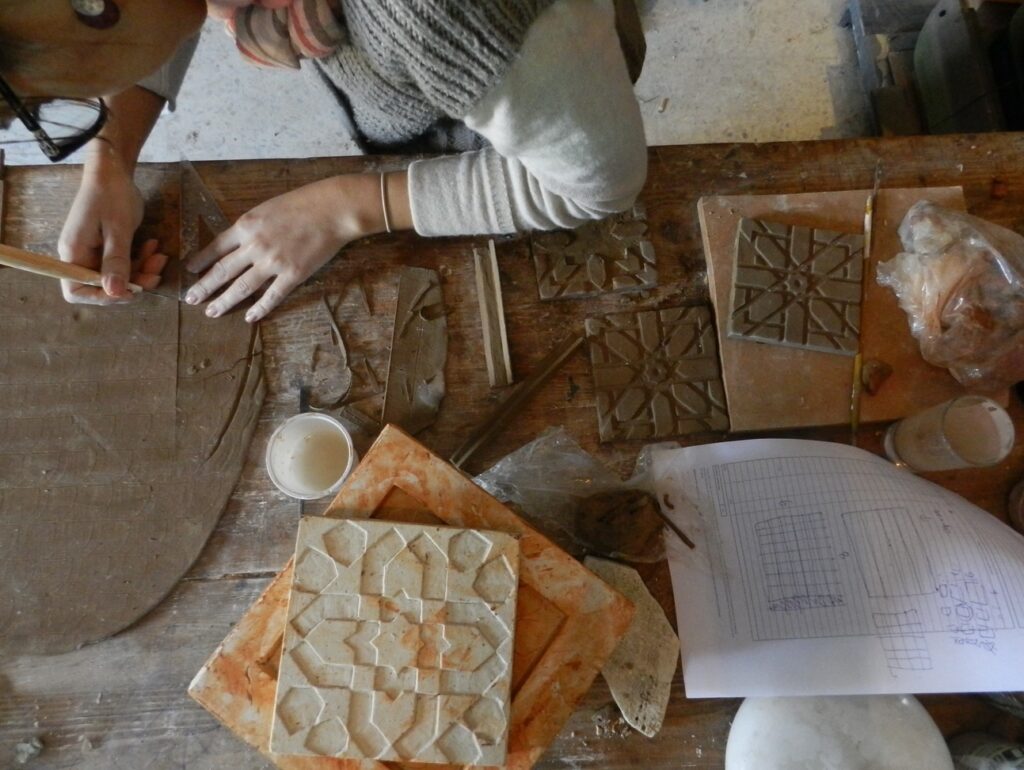
TEMPUS 3D
Acronym: TEMPUS 3D
Project Title: Tempus 3D – Design for the Sustainable Development of Local Artisanal Productions.
Funding Program: TEMPUS
Project Reference: 544106-TEMPUS-1-2013-1-IT-TEMPUS-JPCR
Period: 2013-2017
Coordination:
- Saverio Mecca, UNIFI (Project Leader)
- Mariana Correia, CIAUD-UPT (ESG/UPT coord.)
CIAUD-UPT Researchers:
- Emilia Simão, CIAUD-UPT
- Gilberto Duarte Carlos, CIAUD-UPT
- David Viana, CIAUD-UPT
- Goreti Sousa, CIAUD-UPT
- Teresa Correia, UPT
Entities:
- UNIFI – University of Florence (Italy) (Project Leader)
- ESG – Escola Superior Gallaecia / now integrated at UPT and CIAUD-UPT – Portucalense University’s hub of the Research Centre for Architecture, Urbanism and Design (Portugal)
- POLITO – Polytechnic University of Turin (Italy).
- UB – University of Barcelona (Spain)
- CSM – Experimental Furniture Center (Italy)
- ESSTED – École Supérieure des Sciences et Technologies du Design de Tunis (Tunisia)
- ISBAS – Institute Supérieur de Beaux-Arts de Sousse (Tunisia)
- ISAM-K – Institute Supérieur des Arts et Métiers de Kasserine (Tunisia)
Outputs: 1 book, & several Capacity building courses in Tunisia, Portugal & Italy.
Keywords: Masters in Design, Tunisia, sustainable development, local craft production
Website: https://www.esg.pt/ciesg/tempus-3d/
Abstract:
The European Tempus Program (ERASMUS+) aimed to promote the modernization and creation of skills in higher education in EU partner countries. The TEMPUS 3D project aimed to develop 2nd cycle training (Masters) in priority areas in Tunisia: Human Sciences and Arts domain of Design. The master’s degree focused on the area of design for the sustainable development of local craft production. The project trained designers at the three partner universities in Tunisia, who worked closely with local artisans for the development of the production system, in order to innovate in terms of design, production and the market.

VerSus
Acronym: VERSUS
Project Title: VerSus: Lessons from Vernacular Heritage to Sustainable Architecture.
Funding Program: Culture 2007-2013, European Union
Project Reference: Project 2012-2792
Period: 2012-2014
Coordination: Mariana Correia, CIAUD-UPT (Project Leader & Director.)
CIAUD-UPT Researchers:
- Gilberto Carlos, CIAUD-UPT (Coord.)
- Ana Lima, CIAUD-UPT
- Mónica Alcindor, CIAUD-UPT
- Goreti Sousa, CIAUD-UPT
- David Viana, CIAUD-UPT.
- Teresa Correia, UPT
Entities:
- ESG – Escola Superior Gallaecia / now integrated at UPT and CIAUD-UPT – Portucalense University’s hub of the Research Centre for Architecture, Urbanism and Design (Portugal) (Project Leader)
- UPV – Polytechnic University of Valencia (Spain)
- UNIFI – University of Florence (Italy)
- UNICA – University of Cagliari (Italy)
- CRATerre – Grenoble School of Architecture (France)
Outputs: Book: ‘VERSUS Heritage for Tomorrow’, VERSUS booklet, CIAV2013 International Conference, VERSUS 2014 International Conference, 3 Conference Proceedings: ‘Vernacular Heritage & Earthen Architecture: Contributions for Sustainable Development’ (2013); Vernacular Architecture: Towards a Sustainable Future (2014); ‘Earthen Architecture: Past, Present and Future’ (2014).
Keywords: Vernacular heritage, sustainable architecture, versus method
Abstract:
The project’s main aim was to gain knowledge from the fundamental lessons and principles of the vernacular architecture, and to explore new ways to apply those principles into contemporary sustainable architecture. VerSus research project was based on the identification of strategies and principles within vernacular heritage, in order to define a conceptual approach for sustainable architectural design.

Terra (In)cógnita II
Program: Culture 2000, European Commission
Period: 2009-2011
Partners:
- School of Avignon (France) (Project Leader).
- ESG – Escola Superior Gallaecia / now integrated at CIAUD-UPT (Portugal).
- UNIFI – University of Florence (Italy).
- UPV – Polytechnic University of Valencia (Spain).
- CAUE (France).
This is a follow up project of the TERRA INCÓGNITA one. It was based on scientific missions to the 27 countries of the European Union. It consists of defining the state of the art of European earth architecture, in terms of heritage and contemporary architecture; restoration and training; education and academic research; professionals and producers, etc. The intention is to produce a rigorous cartography of earth architecture in the 27 countries analyzed, as well as the recognition of key specialists, allowing the creation, consolidation and dissemination of an operative network of European specialists.
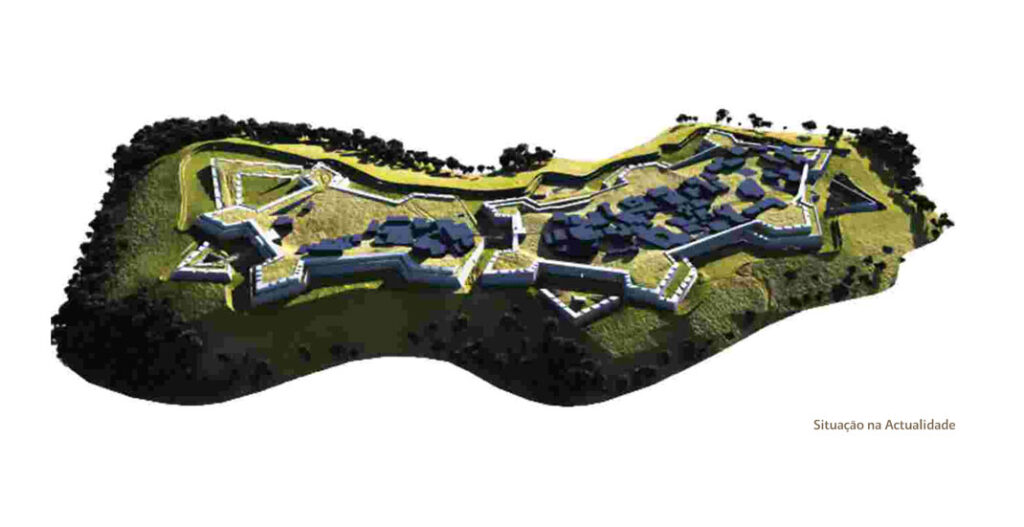
Cadivafor
Program: InterReg IIIA
Period: 2006-2008
Partners:
- CIEFAL-ICOMOS (Galicia-Spain) (Project Leader).
- ESG – Escola Superior Gallaecia / now integrated at CIAUD-UPT – Portucalense University’s pole of the Research Centre for Architecture, Urbanism and Design (Portugal).
- CIS Calicia – Tecnologia y Diseño (Galiciaa-Spain)
The project focuses on the transmission of knowledge of verncular heritage to all branches of society and the general public. It pays special attention to the society of the future (children and young people) as well as local, regional and national authorities in charge of heritage management including specialists in the field of architecture together with craftsmen and companies in the construction and tourism sectors, cultural and social associations and educational institutions. Above all it plays an essential role in contemporary society as it is able to teach us important principles and lessons for a respectful sustainable architecture.
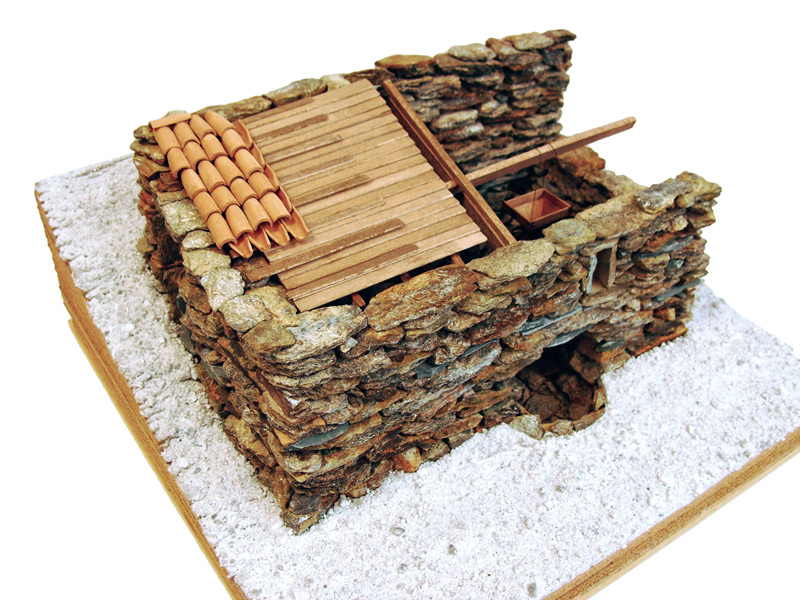
CATPAP
Program: POS_C Vale do Minho Digital
Period: 2006-2008
Partners:
- ESG – Escola Superior Gallaecia / now integrated at CIAUD-UPT Portucalense University’s pole of the Research Centre for Architecture, Urbanism and Design (Portugal) (Project Leader).
- CIM-Alto Minho – Intermunicipal Community of Minho Valley
Completed in March 2008, the project consisted of the preparation of an integrated study of the architectural, archaeological and landscape heritage of the Minho Valley. The existing assets were cataloged through the creation of a database, elaborated in the “In Domus” program, structured in four generic themes: Military Architecture, Religious Architecture, Vernacular Architecture and Archaeological Heritage.
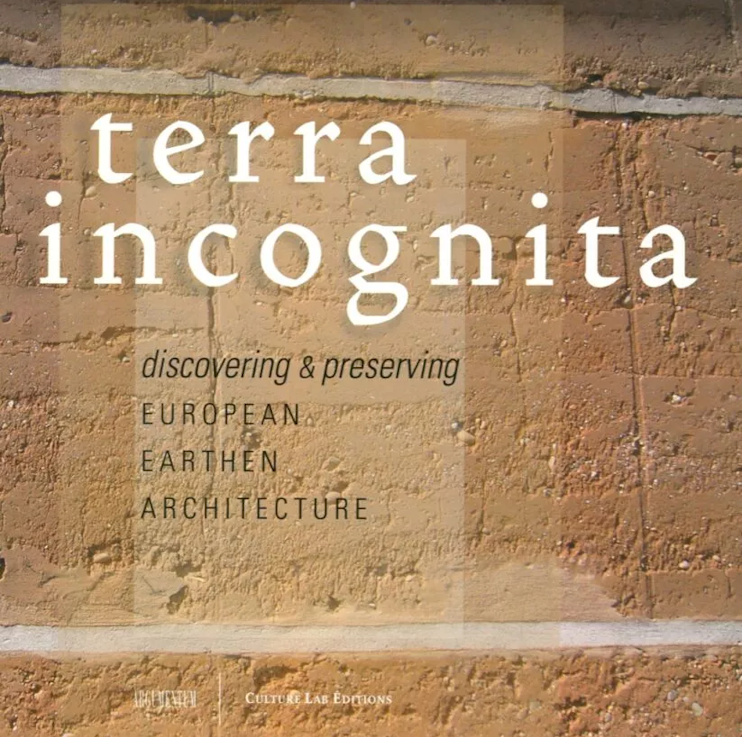
Terra Incógnita
Program: Culture 2000, European Commission
Period: 2006-2008
Partners:
- School of Avignon (France); CRATerre – Grenoble School of Architecture (France) (Project Leader).
- UNIFI – University of Florence (Italy).
- UPV – Polytechnic University of Valencia (Spain).
- ESG – Escola Superior Gallaecia / now integrated at CIAUD-UPT – Portucalense University’s pole of the Research Centre for Architecture, Urbanism and Design (Portugal).
The project was developed through the elaboration of the State of the Art, of earth architecture in Italy, France, Spain and Portugal, with regard to their heritage, contemporaneity, education, training and research. Publication of two European reference works on the subject: “Terra Incognita – Discover” (white book) and “Terra Incognita – Preserve” (manual).
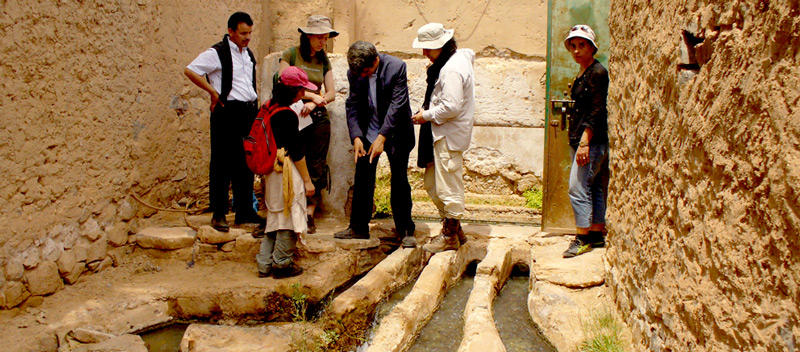
Houses and Cities Built With Earth
Program: Culture 2000, European Commission
Period: 2005-2006
Partners:
- UNICA – University of Cagliari (Italy) (Project Leader).
- ESG – Escola Superior Gallaecia / now integrated at CIAUD-UPT – Portucalense University’s pole of the Research Centre for Architecture, Urbanism and Design (Portugal).
- UV – University of Valencia, History Department (Spain)
The project had as its fundamental objective the training of local technicians in the conservation of built heritage in earth architecture; holding intensive courses in Italy, Spain, Portugal and Morocco (Marrakech and Figuig) with the participation of specialists. Part of the results was formalized in a publication entitled “Houses and Cities Built With Earth: conservation, significance and urban quality”.
Concluding
- As project leader, CIAUD-UPT (previously Ci-ESG) successfully concluded the following scientific projects:
- One project from Creative Europe: 3DPast – Living & virtual visiting European World Heritage (https://esg.pt/3dpast/) (2016-2020);
- One project from the Foundation for Science and Technology (FCT): SEISMIC-V – Vernacular Seismic Culture in Portugal (www.esg.pt/seismic-v) (2013-2015);
- One project from the European Culture 2000 program: VERSUS – Lessons from Vernacular Heritage to Sustainable Architecture (www.esg.pt/versus) (2012-2014);
- Two projects from POS_C Vale do Minho Digital program: CATPAP – Catalogue of the architectural and archaeological heritage of the Alto Minho region (www.esgallaecia.inwebonline.net) (2004-2008); Online Digital library (2004-2008).
- As partner, CIAUD-UPT (previously Ci-ESG) actively participated/participates in:
- One project from HORIZON program: Space Architecture design and prototyping in planetary analogue environments (2024-2028);
- One project from the Foundation for Science and Technology (FCT): SizaATLAS – Filling the Gaps of World Heritage (2021-2024);
- One project from Creative Europe: VERSUS+ | Heritage for People (2019-2023);
- One project from TEMPUS program: Tempus 3D – Design for the sustainable development of local handicraft production (2013-2017);
- Three projects from European Cultura 2000 program: Terra (In)cognita II/Terra Europae (2009-2011) ; Terra Incognita I (2006-2008); Houses and Cities built with Earth (2005-2006)
- One project from InterReg III program: CADIVAFOR – To catalogue, study and valuing the defensive fortresses of Galicia and the north of Portugal border (2006-2008);
- One project from Gulbenkian Programa PARTIS & Art for Change: Ressonâncias: fluxos sonoros e culturais a partir da água para a integração de estudantes migrantes (2025).
